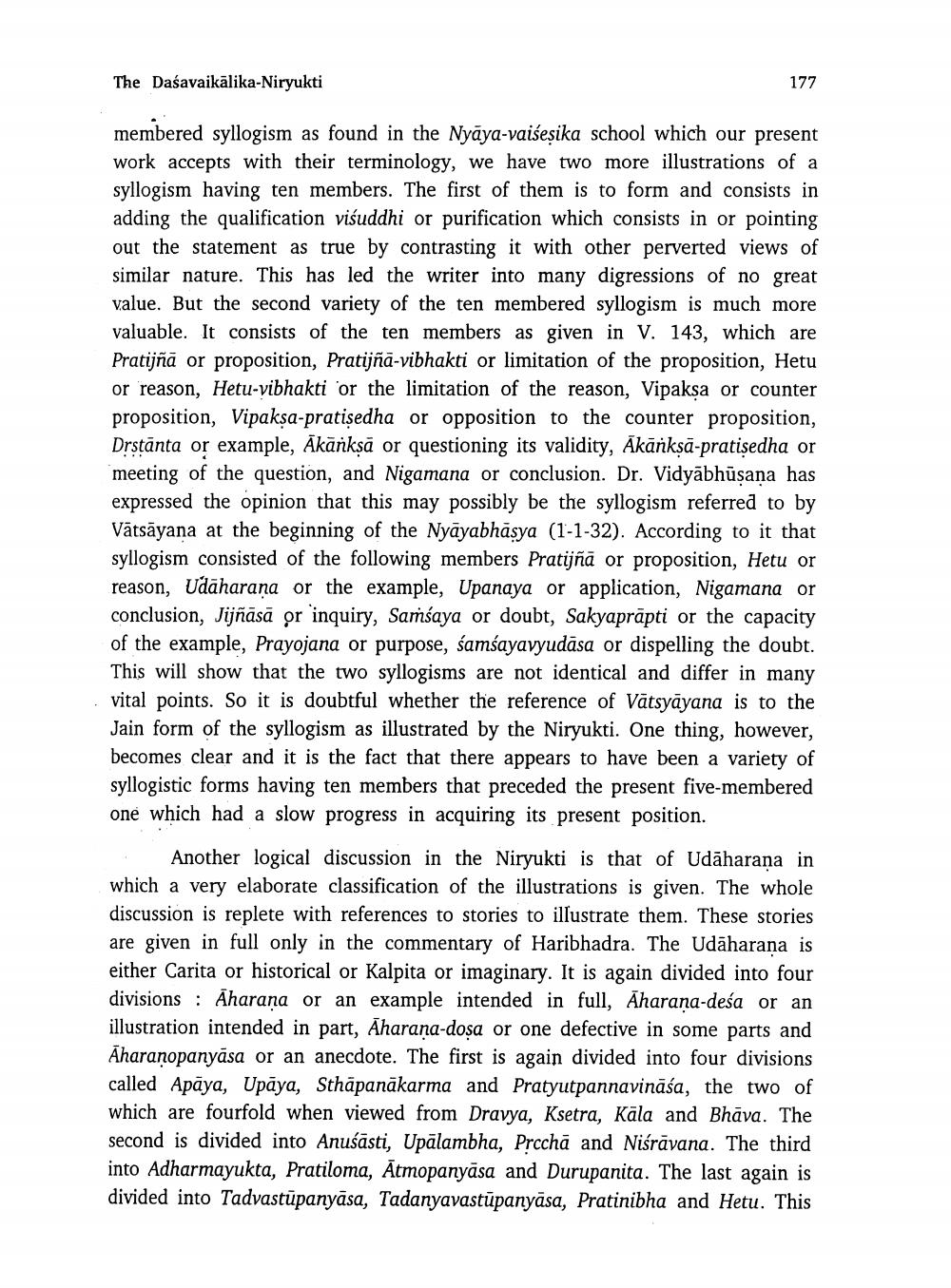________________
The Daśavaikālika-Niryukti
177
membered syllogism as found in the Nyāya-vaisesika school which our present work accepts with their terminology, we have two more illustrations of a syllogism having ten members. The first of them is to form and consists in adding the qualification visuddhi or purification which consists in or pointing out the statement as true by contrasting it with other perverted views of similar nature. This has led the writer into many digressions of no great value. But the second variety of the ten membered syllogism is much more valuable. It consists of the ten members as given in V. 143, which are Pratijñā or proposition, Pratijñā-vibhakti or limitation of the proposition, Hetu or reason, Hetu-vibhakti or the limitation of the reason, Vipaksa or counter proposition, Vipaksa-pratisedha or opposition to the counter proposition, Drstānta or example, Akanksā or questioning its validity, Akanksā-pratisedha or meeting of the question, and Nigamana or conclusion. Dr. Vidyābhūsana has expressed the opinion that this may possibly be the syllogism referred to by Vātsāyana at the beginning of the Nyāyabhasya (1-1-32). According to it that syllogism consisted of the following members Pratijñā or proposition, Hetu or reason, Udaharana or the example, Upanaya or application, Nigamana or conclusion, Jijñāsā or inquiry, Samsaya or doubt, Sakyaprāpti or the capacity of the example, Prayojana or purpose, samsayavyudāsa or dispelling the doubt. This will show that the two syllogisms are not identical and differ in many vital points. So it is doubtful whether the reference of Vātsyāyana is to the Jain form of the syllogism as illustrated by the Niryukti. One thing, however, becomes clear and it is the fact that there appears to have been a variety of syllogistic forms having ten members that preceded the present five-membered one which had a slow progress in acquiring its present position.
Another logical discussion in the Niryukti is that of Udaharana in which a very elaborate classification of the illustrations is given. The whole discussion is replete with references to stories to illustrate them. These stories are given in full only in the commentary of Haribhadra. The Udaharana is either Carita or historical or Kalpita or imaginary. It is again divided into four divisions : Aharana or an example intended in full, Aharana-deśa or an illustration intended in part, Aharana-dosa or one defective in some parts and Aharanopanyāsa or an anecdote. The first is again divided into four divisions called Apāya, Upāya, Sthāpanākarma and Pratyutpannavināśa, the two of which are fourfold when viewed from Dravya, Ksetra, Käla and Bhāva. The second is divided into Anuśāsti, Upālambha, Prochā and Niśrāvana. The third into Adharmayukta, Pratiloma, Ātmopanyasa and Durupanita. The last again is divided into Tadvastūpanyāsa, Tadanyavastupanyāsa, Pratinibha and Hetu. This




